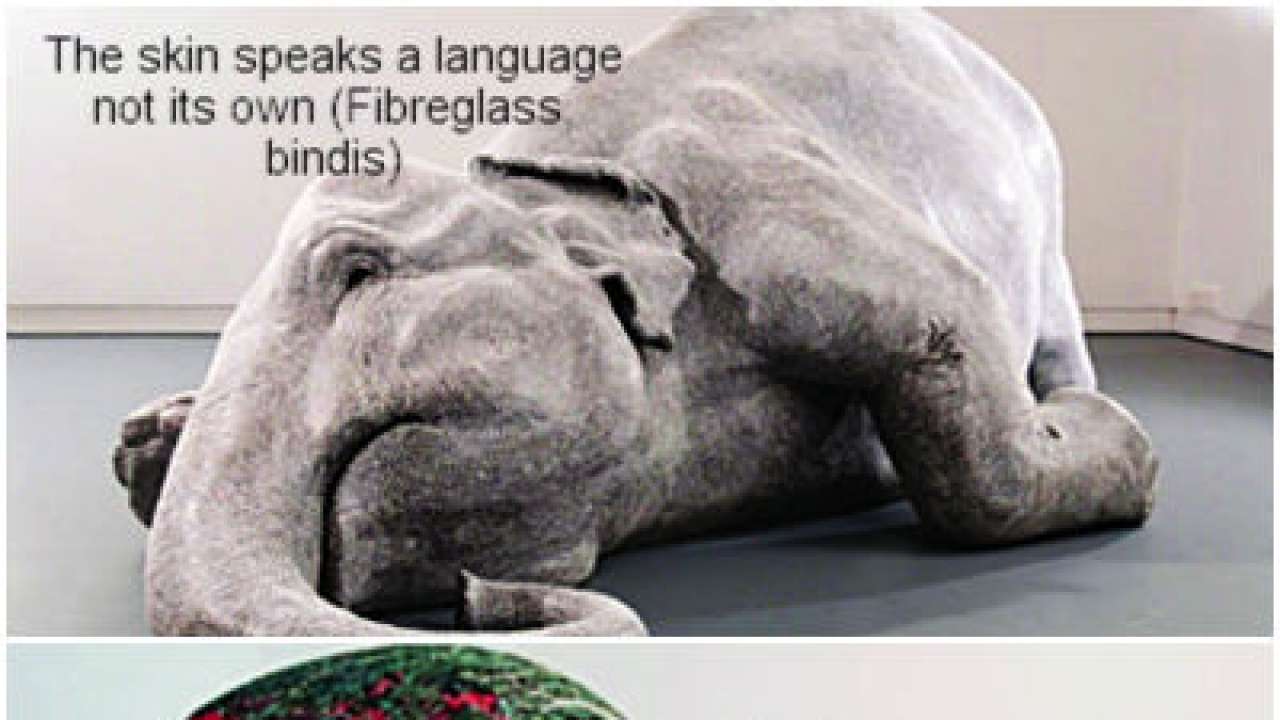
Artist name: Bharti Kher
Born: London, 1969
Lives & works: New Delhi, India
Education: BA Fine Art Painting, Newcastle Polytechnic
Awards: Asia Society Honoree, Arken Art Prize, Sanskriti Award, YFLO Woman Achiever of the Year
Highly regarded for both her sculptural and two-dimensional works, Bharti Kher's allegorical practice references diverse subjects from myths to cultural change, social taboos and gender stereotypes. Famous for her compositions of concentric circles created using multi-layered and multi-coloured bindis on painted board, the bindi has become a recurring motif in her work. Kher refers to her bindi works as 'action paintings'. For her, bindis are like markings or skin, a covering for the body that marks time. They represent an unbroken ritual practiced daily by millions of Indian women, a witness to the day in the life of a person, carrying memory and narrative sleights of hand.
But Kher's interests also go beyond the context of contemporary culture. While the artist is committed to exploring ideas of social codes through her practice, she is also known for large scale body casts and fiberglass sculptures. In 'An Absence of Assignable Cause' the artist creates the largest known heart, that of a blue whale. The gigantic grey fiberglass heart is covered with colourful bindis that make up veins and arteries and appear as an incredible, surreal construction.
Born and raised in England, Kher traveled to India in 1992 and decided to live here permanently after meeting her future husband Subodh Gupta. The couple is iconic in the Indian contemporary art scene. Kher's works are housed in some of the most important private and public collections in the country, including the Kiran Nadar Museum of Modern Art, Delhi and international collections like the Guggenheim, Abu Dhabi, the Tate Modern, London, the Arken Museum of Modern Art, Copenhagen, and the Queensland Art Gallery, Brisbane. The artist's publicly best known work "The skin speaks a language not its own" - a life size sculpture of a dying elephant - was sold for $1.7 million in auction in 2010. Kher is represented by GALLERYSKE in India, Gallerie Perrotin in Paris and Hong Kong, and Hauser & Wirth in New York and London.
Want to impress your next date? Statistics prove that conversing about art and culture is a highly sought quality. OK, perhaps I made that up, but knowing the fluctuations in the stock market or the latest political scandal doesn’t make for the most romantic conversation. Want to talk about art like you’re a learned culture vulture, but don’t know where to begin?
Well here are some tips for how to break down this seemingly impenetrable world of mystery and fear. We’ll start at with the basics; How to recognise some masters. Here’s a little cheat sheet to help navigate through who’s doing/did what.